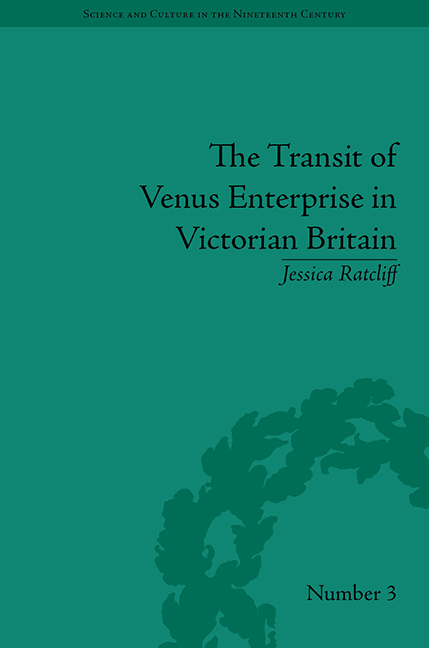
- This book is no longer available to purchase from Cambridge Core
- Publisher:
- Pickering & Chatto
- Online publication date:
- December 2014
- Online ISBN:
- 9781851965564
- Subjects:
- History, History of Science: General Interest
Our systems are now restored following recent technical disruption, and we’re working hard to catch up on publishing. We apologise for the inconvenience caused. Find out more: https://www.cambridge.org/universitypress/about-us/news-and-blogs/cambridge-university-press-publishing-update-following-technical-disruption

In the second half of the nineteenth century, the British Government spent a vast amount of money measuring the distance between the earth and the sun using observations of the transit of Venus. Hundreds of expeditions were organized by countries across the globe to collect data on the transits of 1874 and 1882, using the most up-to-date astronomical instruments and new photographic methods.
Like the Great Exhibitions which were so popular at the time, the transits of Venus caught the public's imagination. An enthusiastic press presented the events as a vivid symbol of the strength of British science – even though the resulting measurements were found to be no more useful than those produced after the transits of 1761 and 1769.
Ratcliff presents a clear and compelling narrative of the two Victorian transit programmes. She draws out their cultural significance and explores the nature of 'big science' in late-Victorian Britain.
"'an engaging and provocative contribution'"
 Loading metrics...
Loading metrics...
* Views captured on Cambridge Core between #date#. This data will be updated every 24 hours.
Usage data cannot currently be displayed.